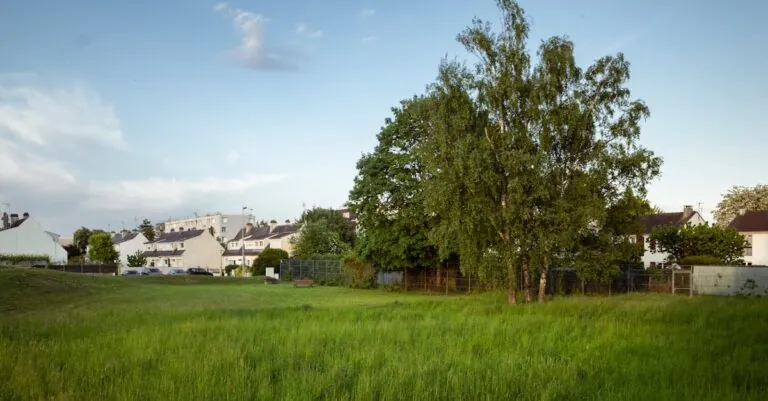Buying a home can feel like climbing Mount Everest, especially when it comes to that daunting down payment. But what if there’s a way to lighten the load without sacrificing your dreams? It’s time to trade in the hefty down payment for some clever strategies that’ll keep your wallet happy and your future bright.
Table of Contents
ToggleUnderstanding Down Payments
A down payment represents an upfront cash payment made when purchasing a home. This amount often ranges from 3% to 20% of the home’s purchase price, depending on the mortgage type and lender requirements.
What Is a Down Payment?
A down payment serves as a partial payment towards the total cost of the home. Lenders assess the down payment to gauge the buyer’s commitment and financial stability. Larger down payments can reduce the loan amount, lowering monthly mortgage payments. This upfront investment also influences mortgage insurance costs; a down payment below 20% typically incurs private mortgage insurance (PMI).
Importance of Down Payments in Home Purchasing
Down payments play a crucial role in the home buying process. An adequate down payment can lead to better mortgage rates and terms. Buyers demonstrating financial responsibility by making larger down payments often secure more favorable loan conditions. This indicates to lenders that buyers are less likely to default on loans. Building equity early in the homeownership journey comes from starting with a solid down payment. Moreover, down payments establish ownership interest in the property, providing a sense of security and investment in the future.
Strategies to Reduce Down Payment Amount

Reducing the down payment amount can significantly ease the financial burden of purchasing a home. Several strategies exist to help potential homeowners achieve this goal.
Explore Different Loan Options
Various loan options can help minimize down payments. Conventional loans may require as little as 3% down, while FHA loans typically ask for a 3.5% deposit. VA loans, available to eligible veterans, offer zero down payment opportunities. USDA loans support low to moderate-income buyers in rural areas, also providing no down payment options. Selecting the right loan type can significantly impact the total cash required at closing.
Utilize Down Payment Assistance Programs
Many organizations offer down payment assistance programs to help buyers bridge the gap. Nonprofits, state, and local governments often provide grants or loans to cover down payments. Eligibility criteria generally depend on income, homebuyer status, and property location. Utilizing these resources not only reduces upfront costs but also promotes homeownership among low-income populations. It’s essential to research and apply for programs that align with personal financial situations.
Consider First-Time Homebuyer Grants
First-time homebuyer grants serve as financial gifts for eligible individuals. These grants can be used to cover down payments or closing costs, directly decreasing the cash needed upfront. Many states and municipalities offer these programs to foster homeownership. Each grant typically has specific eligibility requirements and application processes. Checking with local housing authorities can reveal available options that suit individual needs.
Financial Planning Tips
Effective financial planning significantly impacts the ability to reduce down payment amounts. Implementing specific strategies can provide pathways toward homeownership without overwhelming financial strain.
Improving Your Credit Score
Boosting credit scores enhances mortgage qualification prospects. Regularly checking credit reports helps identify errors that may lower scores. Making timely payments consistently demonstrates reliability as a borrower. Reducing credit card balances also positively influences scores, as lower utilization ratios signal responsible financial management. Targeting a score of 740 or higher can lead to more favorable loan terms.
Budgeting for a Larger Down Payment
Creating a budget specifically for down payment savings positions buyers for success. Tracking monthly expenses reveals potential savings opportunities. Allocating a certain percentage of income toward this goal accelerates progress. Collaborating with a financial advisor can provide personalized budget plans tailored to individual circumstances. Involving family members in saving efforts might increase available resources. Establishing a separate savings account for down payment funds minimizes the temptation to spend.
The Impact of a Lower Down Payment
Lowering the down payment can significantly affect homeownership. Buyers often encounter both perks and drawbacks when making this decision.
Advantages and Disadvantages
Sourcing a lower down payment allows buyers to enter the housing market quicker. The reduced upfront cost appeals to first-time homeowners. Accessing various loan options, like FHA or VA loans, facilitates this process. Some drawbacks exist, including higher monthly payments and mortgage insurance requirements. A smaller down payment may lead to increased overall loan costs. Ultimately, weighing these advantages against disadvantages is crucial for informed decision-making.
Long-Term Financial Considerations
Long-term financial planning plays a vital role in homeownership. Lower down payments can lead to larger mortgages, impacting financial stability. Higher monthly payments might strain budgets over time. Increased interest on the loan can raise overall cost as well. Building equity in a home progresses more slowly with smaller initial investments. Regular financial assessments help homeowners navigate these challenges effectively. Prioritizing credit management and savings can mitigate some long-term risks.
Reducing the down payment amount can significantly ease the path to homeownership. By exploring various loan options and assistance programs, prospective buyers can find solutions tailored to their financial situations.
Enhancing credit scores and creating a dedicated savings plan can further support down payment goals. While lower down payments offer quicker entry into the housing market, it’s essential to weigh the long-term financial implications.
With careful planning and smart strategies, achieving homeownership becomes a more attainable reality, paving the way for a stable and rewarding investment in the future.




